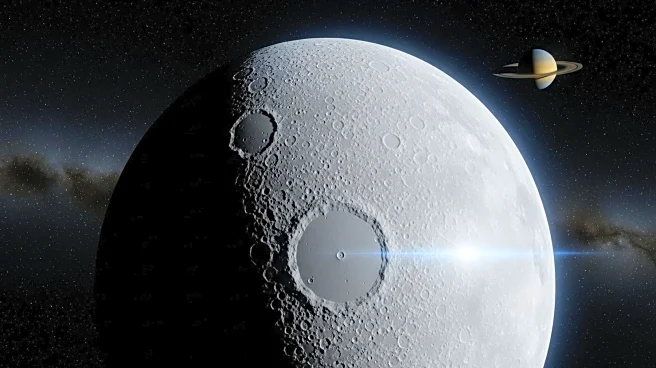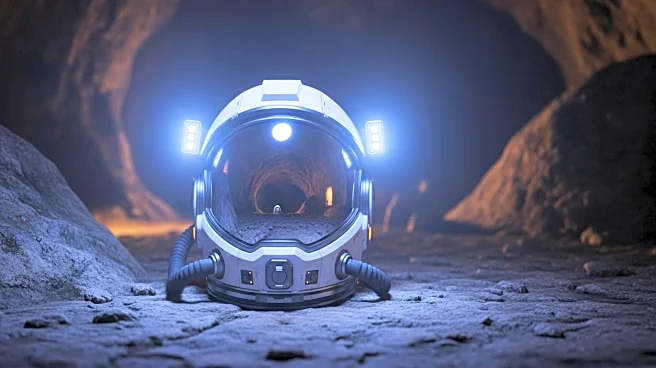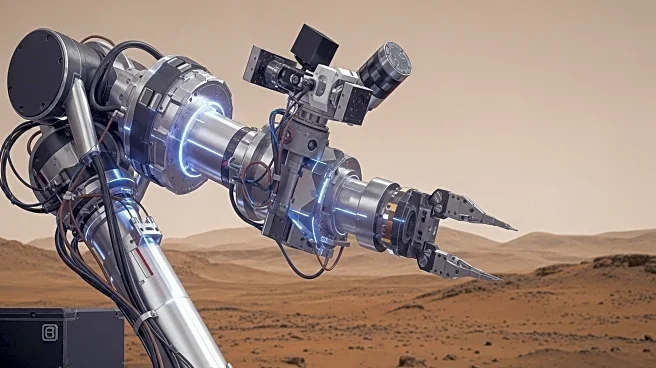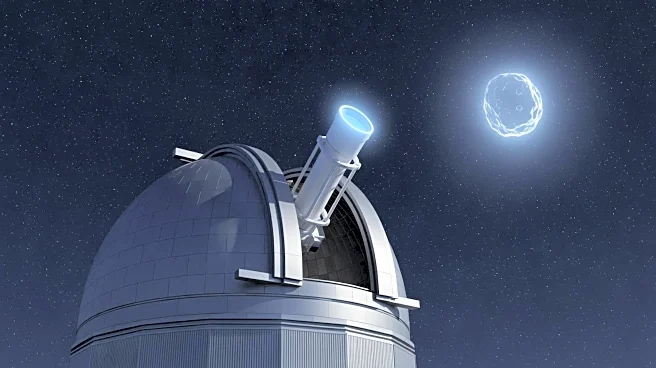What's Happening?
Researchers from Chalmers University of Technology and NASA have discovered that polar and nonpolar substances can mix in the extremely cold environment of Saturn's moon Titan. This finding challenges
established chemistry rules and provides new insights into the conditions that may have existed before life emerged. The study, published in the Proceedings of the National Academy of Sciences, reveals that hydrogen cyanide can form crystals with methane and ethane, substances previously thought to remain separate.
Why It's Important?
The discovery has significant implications for our understanding of prebiotic chemistry and the potential for life in extreme environments. It suggests that Titan's conditions could offer clues about the early chemical processes on Earth. This research may influence future studies on the origin of life and the exploration of other celestial bodies with similar environments. The findings could also impact the planning and objectives of NASA's upcoming Dragonfly mission to Titan.
What's Next?
NASA's Dragonfly mission, set to launch in 2028 and arrive at Titan in 2034, aims to further investigate the moon's surface and prebiotic chemistry. Researchers will continue to explore hydrogen cyanide chemistry, potentially in collaboration with NASA, to understand its role in the formation of life's building blocks. This ongoing research may expand our knowledge of chemistry in cold environments and inform future space exploration missions.











